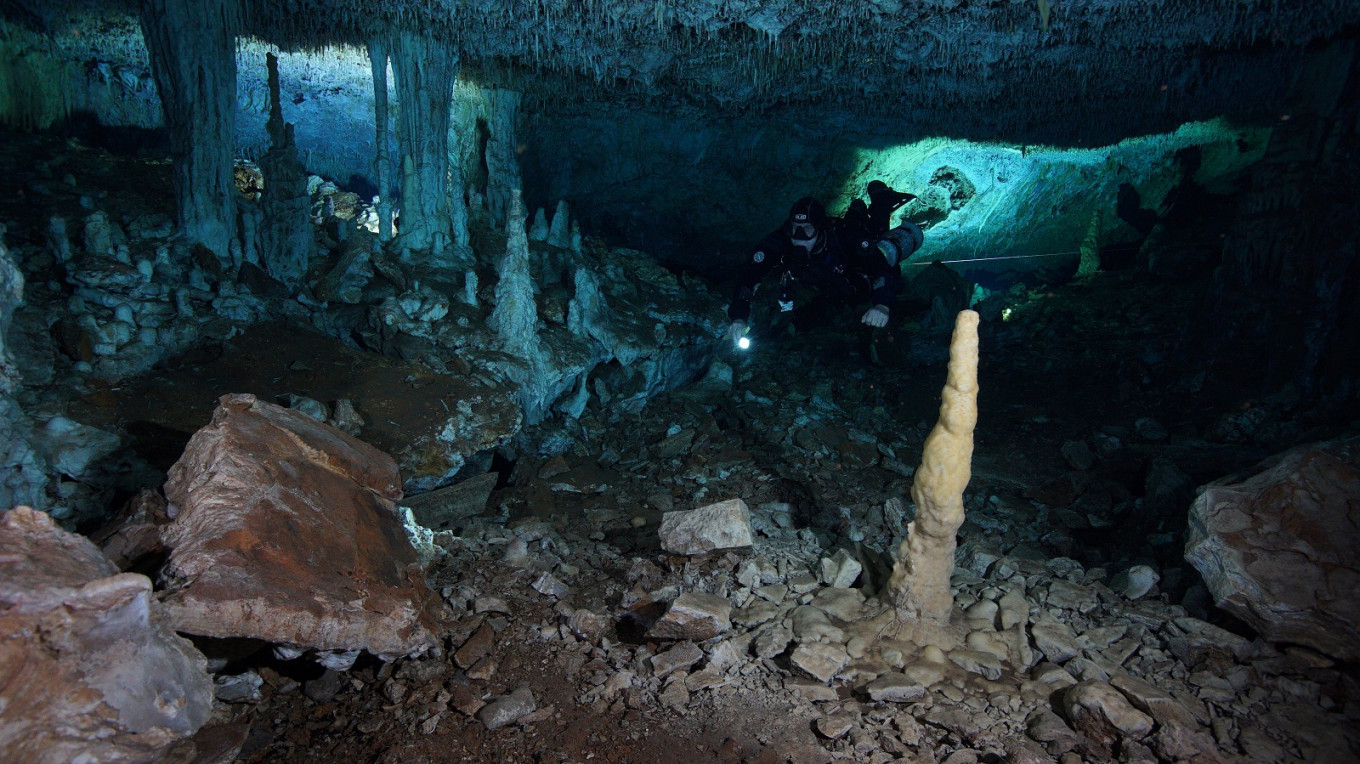Popular Reads
Top Results
Can't find what you're looking for?
View all search resultsPopular Reads
Top Results
Can't find what you're looking for?
View all search resultsPrehistoric ochre mining operation found in submerged Mexican caves
Change text size
Gift Premium Articles
to Anyone
R
esearchers diving into dark submerged caves on Mexico's Yucatan Peninsula have found evidence of an ambitious mining operation starting 12,000 years ago and lasting two millennia for red ochre, an earth mineral pigment prized by prehistoric peoples.
More than 100 dives totaling more than 600 hours in Quintana Roo state turned up numerous mining artifacts, the scientists said on Friday. These included ochre extraction pits, digging tools like hammerstones and small piledrivers made of stalagmites, markers that helped the miners navigate the extensive cave network and hearths used to provide light. The caves were not underwater at the time of the mining.
The mining was undertaken as human populations first spread through the region. The caves subsequently were abandoned for millennia before becoming submerged roughly 8,000 years ago amid rising sea levels after the last Ice Age.
Researchers previously had found human skeletons in the caves but had not identified why people were there.
Read also: Want to try caving? Here’s what you need to know
"Across the world, archaeological evidence has shown that humans have been using ochre for hundreds of thousands of years. Even Neanderthals used ochre," said University of Missouri archaeological scientist Brandi MacDonald, lead author of the research published in the journal Science Advances.
Ochre is believed to have offered uses including painting objects and bodies, mortuary practices and perhaps hide tanning.
The dive team explored about 4.3 miles (7 km) of subterranean passages in three separate cave systems, with mining spanning more than a half-mile (900 meters).
"It is pretty electrifying to be the first people to enter into an area that has not seen humans for thousands of years and to see what they left behind," said study co-author Sam Meacham, founder of El Centro Investigador del Sistema Acuífero de Quintana Roo A.C. (CINDAQ) and co-discoverer of the mines.
"All the artifacts are in pristine condition, so we can see percussion marks where they were breaking the stone floor, we find tools laying beside the pits and the marker stone cairns (rock piles) and fire pits that they used for navigating and illuminating the cave," added study co-author Eduard Reinhardt of McMaster University in Canada.











